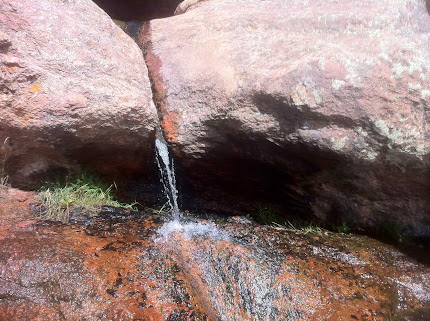GEOframe is a system for doing hydrology by computer. By saying that it is a system, we emphasize that it is not a model but an infrastructure that can contain many differentiated modelling solutions (some tens of that) that are built upon model components [Argent et al., 2004]. This is because GEOframe leverages theObject Modelling system-framework (v3)[David et al., 2013] that allows to connect modelling components to solve a specific hydrological issue together and having many alternatives for its mathematical/numerical description. This infrastructure allows adapting the tools to the problems and not vice versa [Rigon et al., 2022]. In GEOframe particular attention has been dedicated to allow enhancements and additions writing the least code possible. The core code has been designed to open to addition and closed to modifications [Gamma et al, 1995], thus allowing stability of the code base over time. GEOframe contains tens of components that cover rainfall-runoff [Formetta et al., 2011], snow modelling [Formetta et al., 2014] evaporation and transpiration[Bottazzi et al., 2021], infiltration [Tubini and Rigon, 2022], terrain analysis tools [Abera et al., 2014], interpolation models [Bancheri et al., 2018], calibrations tools [David et al., 2013], and so on. Every modelling paradigm is included, as, for instance process based modelling [Tubini and Rigon, 2022], lumped modelling [Formetta et al., 2014b], machine learning [Serafin et al., 2021], or can be included by adding appropriate components [Serafin, 2019]. Spatially disjoint catchments can be modelled separately and joined together in a bigger model. GEOframe has been applied to hydrological simulations from the point scale, to Alpine catchments [Abera et al., 2017], to large catchments as the Blue Nile [Abera et al., 2016], and among those is being deployed to the Po river. GEOframe is open source and built with open source tools.
At Present GEOframe has three main branches:
Many of the components, however, are shared among the various branches and “mixed” modelling solutions can be envisioned by choosing components from one or the other. In fact, for instance GEOSPACE is built upon WHETGEO and GEOframe ET components with the addition of a broker component that transmit and receive data from the to components subsets. For any of the sub-branches please refer to the respective blog pages.
References
Abera, W., A. Antonello, S. Franceschi, and G. Formetta. 2014. “The uDig Spatial Toolbox for Hydro-Geomorphic Analysis.” In Geomorphological Techniques (Online Edition), edited by British Society for Geomorphology. British Society for Geomorphology.
Abera, Wuletawu, Giuseppe Formetta, Luca Brocca, and Riccardo Rigon. 2017. “Modeling the Water Budget of the Upper Blue Nile Basin Using the JGrass-NewAge Model System and Satellite Data.” Hydrology and Earth System Sciences 21 (6): 3145–65.
Abera, Wuletawu, Giuseppe Formetta, Marco Borga, and Riccardo Rigon. 2017. “Estimating the Water Budget Components and Their Variability in a Pre-Alpine Basin with JGrass-NewAGE.” Advances in Water Resources 104 (June): 37–54.
Argent, Robert M. 2004. “An Overview of Model Integration for Environmental Applications —components, Frameworks and Semantics.” Environmental Modelling and Software 19 (3): 219– 34.
Bancheri, Marialaura, Francesco Serafin, Michele Bottazzi, Wuletawu Abera, Giuseppe Formetta, and Riccardo Rigon. 2018. “The Design, Deployment, and Testing of Kriging Models in GEOframe with SIK-0.9.8.” Geoscientific Model Development 11 (6): 2189–2207.
Bottazzi, Michele, Marialaura Bancheri, Mirka Mobilia, Giacomo Bertoldi, Antonia Longobardi, and Riccardo Rigon. 2021. “Comparing Evapotranspiration Estimates from the GEOframe-Prospero Model with Penman–Monteith and Priestley-Taylor Approaches under Different Climate Conditions.” WATER 13 (9): 1221.
David, O., J. C. Ascough II, W. Lloyd, T. R. Green, K. W. Rojas, G. H. Leavesley, and L. R. Ahuja. 2013. “A Software Engineering Perspective on Environmental Modeling Framework Design: The Object Modeling System.” Environmental Modelling & Software 39 (c): 201–13.
Formetta, G., R. Mantilla, S. Franceschi. 2011 and R. Rigon. “The JGrass-NewAge System for Forecasting and Managing the Hydrological Budgets at the Basin Scale: Models of Flow Generation and Propagation/routing.” Geoscientific Model. https://gmd.copernicus.org/articles/4/943/2011/.
Formetta, G., S. K. Kampf, O. David, and R. Rigon. 2014. “Snow Water Equivalent Modeling Components in NewAge-JGrass.” Geoscientific Model Development 7 (3): 725–36.
Formetta, G., A. Antonello, S. Franceschi, O. David, and R. Rigon. 2014. “Hydrological Modelling with Components: A GIS-Based Open-Source Framework.” Environmental Modelling & Software 55 (May): 190–200.
Gamma, Erich, Richard Helm, Ralph Johnson, Ralph E.. Johnson, and John Vlissides. 1995. Design Patterns: Elements of Reusable Object-Oriented Software. Pearson Deutschland GmbH.
Rigon, Riccardo, Giuseppe Formetta, Marialaura Bancheri, Niccolò Tubini, Concetta D’Amato, Olaf David, and Christian Massari. 2022. “HESS Opinions: Participatory Digital Earth Twin Hydrology Systems (DARTHs) for Everyone: A Blueprint for Hydrologists.” Hydrology and Earth System Sciences Discussions, 1–38.
Serafin, Francesco. 2019. “Enabling Modeling Framework with Surrogate Modeling Capabilities and Complex Networks.” Edited by Riccardo Rigon And. Ph.D., University of Trento.
Serafin, Francesco, Olaf David, Jack R. Carlson, Timothy R. Green, and Riccardo Rigon. 2021. “Bridging Technology Transfer Boundaries: Integrated Cloud Services Deliver Results of Nonlinear Process Models as Surrogate Model Ensembles.” Environmental Modelling and Software[R] 146 (105231): 105231.
Tubini, Niccolò, and Riccardo Rigon. 2022. “Implementing the Water, HEat and Transport Model in GEOframe (WHETGEO-1D v.1.0): Algorithms, Informatics, Design Patterns, Open Science Features, and 1D Deployment.” Geoscientific Model Development 15 (1): 75–104.
—————
TRANSCOM ISP – Free Sigma HSE Email
Level 6 Domain Names are FREE – Register Now.

